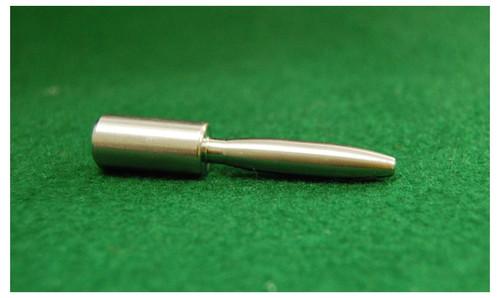I'm following you just fine. You're using a light-weight Hammer so you're using a much shorter bullet than is typical for the RUM case, and you want to bring the shoulders forward until the bullet base it at the bottom of the neck relative to your current COL. Since the base of the bullet almost certainly doesn't extend past the neck/shoulder junction in a standard RUM with a .306" long neck, you want to turn ~0.089" of empty neck space into full-diameter space. Same exact concept as the Dasher vs the parent BR case.
I don't know exactly which one you want to use, but one of their bullets (the 101 Hammer Blackout) is 0.852" long and the total length of the bearing surface and base is 0.245". That's just about the shortest bullet I know of that could be shot from a 300 RUM and hold together, unless you did something like a 16 twist.
My assumption that you're looking at the super-light Hammers is what drove my comment about the Gibbs being the shortest neck I'm aware of that actually holds up under decent recoil, at .217". If you made the neck Gibbs-length then their shortest bullets (Hammer 100 Shock Hammer, 101 Blackout Hammer, and 103 Power Hammer) will all seat their base to the neck/shoulder junction, but not protrude too much out the front to not fit in a standard 300 RUM throat. If anything I'd still be nervous about the throat being too long, but Hammers have shown themselves to be jump tolerant if you don't want to mess with that geometry.
So 0.217" neck, blow it out to 40* and take a little taper out of it, and we can call it the 300 ROCKY after Mr Gibbs


You've made me want one now. I'm going to go waste a lot of time in QuickDesign now.
Viola: Projected 113gn of H20 Capacity.
View attachment 502121

